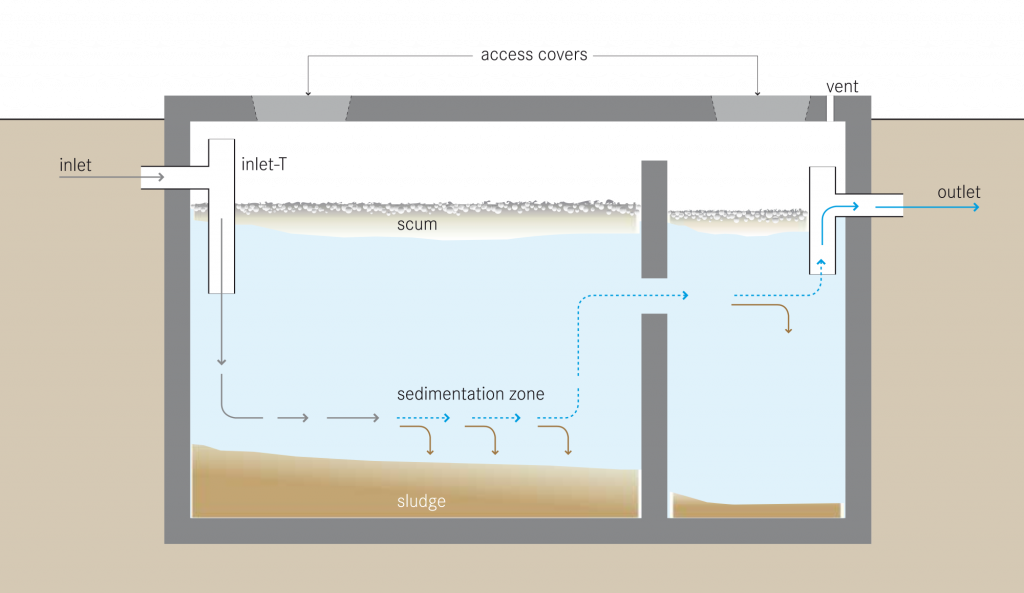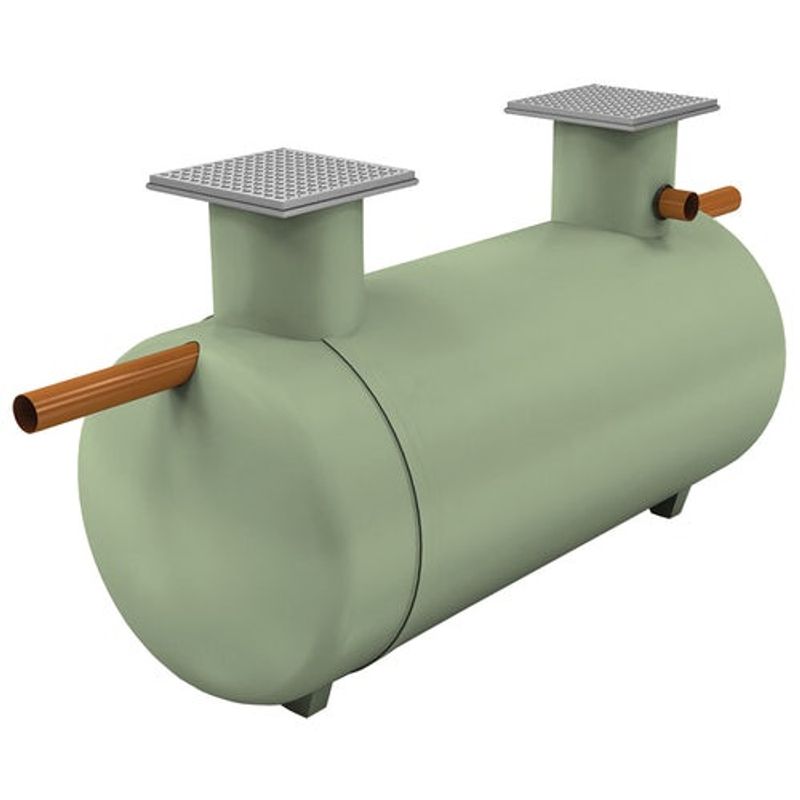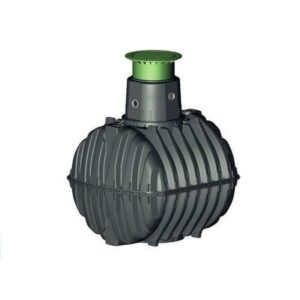Your septic tank does its best to collect and clean the wastewater from your home, removing solids and making the water safe to be sent on to the soakaway system.
But because it’s out of sight, you don’t often think about it, right?
Until things go wrong, that is.
What do you do then?
There’s no need to panic:
At Drainage Superstore, we have plenty of experience dealing with the most common septic tank problems, from ground movement to a knocked-out dip pipe.
And we’re going to show you what they are – and, more importantly – how to fix them.
Let’s get right to it.
Table of contents:
How do septic tanks work?

In order to gain a better understanding of what can go wrong with a septic tank and the appropriate septic tank repairs, we need to know how septic tanks work.
Here’s the deal:
In effect, a septic tank is a breeding ground for bacteria. That’s because it’s anaerobic and aerobic bacteria that make the whole system work. They break down potentially harmful waste, leaving water clean enough to flow to the septic tank drain field.
Healthy, busy bacteria are the key to a well-functioning septic tank. And the last thing you want to do is harm them in any way. So, what should you never put in a septic tank?
Chemicals which stop bacteria from working, such as those found in bleach, paint, medicines, disinfectants, garden pesticides and certain solvents should never go in your septic tank.
Common septic tanks problems

There are two general types of septic tanks in the UK – traditional and onion septic tanks.
Traditional ones are essentially rectangular, masonry-built tips with between one and three settlement chambers.
On the other hand:
Onion septic tanks – so named because their shape resembles that of an onion – are made from glass fibre or plastic and feature upward rather than lateral flow. Robust and highly durable, they are the most popular option in the UK by far.
Now that we know what a septic tank is and how it functions, let’s take a closer look at the most common problems with septic tanks and some possible solutions.
Ground movement
Depending on the location of your home, the ground around your septic tank might move. Even though major earthquakes are not particularly common in the UK, a few hundred smaller ones that people don’t even feel are recorded by specialist instruments every year.
The problem is:
Even small ground movement might exert a tremendous amount of pressure on your tank, causing anything from minor cracks to significant structural damage.
Unfortunately, there’s nothing you could really do about ground movement. If your septic tank backs up as a result, you’ll have to empty it more often.
So, if you’re wondering ‘why is my septic tank always full of water,’ it could possibly be the result of ground movement.
Collapsed baffle
A baffle is a barrier in your septic tank which ensures that effluent does not enter the septic tank soakaway. Because the soakaway is designed to deal only with liquid waste, it might get blocked in case the baffle collapses. At this point, wastewater will back up into your home.
What can you do about it?
Sadly, not much.
The thing is:
A collapsed welded ball and cone baffle is impossible to repair since you would have to dig up the entire tank and break it into two halves.
If you have a hanging baffle which gets knocked out of place, it could be possible to re-hang it so long as the metal hooks are undamaged. Keep in mind that you’ll have to act quickly since a collapsed baffle is also likely to cause permanent soakaway problems and irreparable damage to the whole system.

Vehicle damage
If your property has a septic tank, it’s most likely located in the countryside. In this case, it might be possible for heavy farm vehicles like tractors to drive over it inadvertently and cause it to collapse under the excess weight.
And that’s the last thing you want.
Here, prevention is the key. So, mark clearly the location of the tank and the soakaway system to prevent anyone from driving over it or parking on top!
Tree and plant root damage
If your septic tank is located in close proximity to large trees or lots of shrubbery, the roots might grow through the tank itself or the connecting pipes. If left unchecked, this will result in a nightmare scenario and leave a horrible mess all over your property, not to mention rendering the septic tank useless.
Now:
Since you can’t actually see where tree roots are growing, the only thing you can do is regular septic tank inspection checks.
Poor maintenance
Lack of proper maintenance is one of the most common septic tank problems out there.
The good news is:
It’s also one of the easiest to deal with. All you have to do is make sure your septic tank is emptied regularly by a septic tank emptying company.
How often is ‘regularly’?
That depends on the septic tank model, its age and possible hazards, among other things. You’ll want to discuss the ideal schedule for your septic tank with the professionals, flagging up any potential complications.
How do I know if my septic tank is blocked?
The tell-tale signs are waterlogging and soaked ground, foul odours, slow flushing toilets, gurgling from the pipes, overflowing baths, sinks and toilets and so on. As soon as you notice any of these, you must schedule an emergency inspection straight away.
Damaged dip pipe
Like a baffle, a dip pipe (also known as a T-pipe) prevents solids from entering the soakaway system. And just like a collapsed baffle, a damaged dip pipe will cause soakaway issues.
Depending on the type of septic tank, you might have a dip pipe, a baffle or both.
Now:
It’s not unusual for a dip pipe to get knocked out during a standard maintenance procedure and end up at the base of the tank. When that happens, you can repair the septic tank by refitting the dip pipe securely.
Looking after your septic tank

A septic tank is almost maintenance-free, but it still requires some maintenance in the shape of regular emptying by a professional septic tank emptying service.
The thing is:
When left unchecked, most septic tank problems are likely to cause irreparable damage, making any meaningful septic tank repairs unfeasible. If it comes to that, you’ll have no alternative but to replace the septic tank.
So, the best thing to do is to prevent these issues from occurring in the first place.
And while you can’t really do anything with some of these, such as ground movement, there’s plenty you can do to avoid things like vehicle damage.
Bottom line:
Ensure regular maintenance and schedule a thorough inspection at the first signs of septic tank overflow, blockage or other damage.















